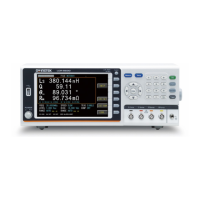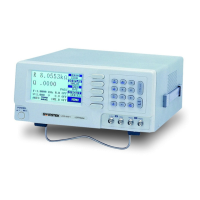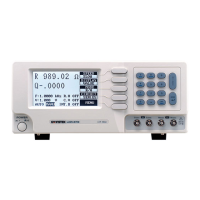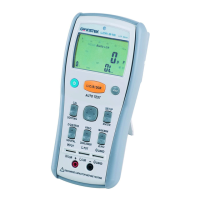Where:
X
x
is the measured X value[].
C
x
is the measured C value[F].
L
x
is the measured L value[H].
D
e
is D’s accuracy.
F is the measuring frequency.
The following will show how to decide the basic
accuracy, A:
A is 0.05:
When the measuring signal is 0.4V
rms
≤V
s
≤1.2V
rms
and the measurement speed is slow or medium.
A is 0.1:
When the measuring signal is 0.4V
rms
≤V
s
≤1.2V
rms
and the measurement speed is fast.
When the measuring signal is V
s
<0.4V
rms
or V
s
>1.2V
rms
the basic accuracy, A, should be calculated according to
the following description:
Write down the basic accuracy, A, for the
measurement speed currently being used and then
write down the correction factor, A
r
, according to
the amplitude of the measuring signal being
currently used (see Figure 13-2). Let A be multiplied
by A
r
to get the actual basic accuracy, A, for that
moment. V
s
represents the amplitude of the
measuring signal.

